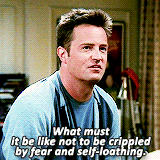Last week, I wrote an article describing common misconceptions the general public tends to have about GMOs or genetically modified organisms. This week, the coin flips: these are common misconceptions scientists tend to spread to the public regarding GMOs, which I learned thanks to this wonderful article by Claire Marris for The Public Acceptance of Agricultural Biotechnologies Board (PABE) and a few misconceptions that I've observed in my scientific community as well.
The public argues that scientists are recklessly ingratiating GMOs into our food, health, and agriculture without enough research, whereas scientists believe that the public exaggerates statistics and risks wildly out of proportion. Both sides of the GMO argument, however, blame ignorance and misinformation. Understanding how scientists think can help the public better understand scientific arguments in order to make more informed decisions, whether they are for or against GMOs.
I realize that most of my audience isn't scientists; but it’s important to understand and fully consider where both sides of the argument lie — scientists and public. As a scientist and a recreational writer, I am often put in unique situations where I have to convey and communicate often complex scientific processes.
1. “For” or “against” with no middle ground.
Scientists usually see things as either black or white. The experimental design worked or it didn't. Their t-test showed a significant difference or it didn't. People accept GMOs or they reject them. In reality, Marris found that most of her participants were rather ambivalent on the topic of GMOs. Ambivalence, while not necessarily an indication of ignorance, is representative of a lack of education or information. As scientists, we should see this for the opportunity it is. People that remain inconclusive on the GMO debate are perhaps the most impressionable and provide the greatest hope in tipping the scale towards science.2. A huge focus on unnaturalness.
This myth is mostly true, but the focus isn't as drastic as scientists make it out to be. The majority of the participants in Marris's study actually did think genetic modification is unnatural, but mostly in association with other issues in agriculture, including pesticide and herbicide use on crops and antibiotic use in livestock. Also, most people thought that scientists were altering existing organisms rather than creating entirely new ones. With better education, these myths can easily be dissociated so perhaps the general public doesn't see genetic modification as an "upsetting of the equilibrium of nature."
3. The public is too grounded in confirmation biases.
Confirmation biases are nifty psychological tricks convincing authors can use to their advantage in effort of more effective rhetoric. The truth is that no one is completely immune to confirmation biases, scientists, included, but just because they exist doesn't mean they can't be thought over on a deeper level. In this sense, scientists tend to underestimate the public's intelligence. Most people are open to new ideas and thought so long as both sides of the argument are effectively and accurately represented.
4. "Zero risk" standards.
It is commonly believed that many people have theoretical demands from scientists that just aren't possible. Indeed the public often has an ever-so-demanding request that their food be safe. In my humble opinion, asking for safety while consuming one's own energy source isn't so much to ask. Marris found that most of her participants were actually fairly realistic, simply wanting a clearer assessment of both risks and benefits of GMOs from scientists and regulatory authorities.
These common misconceptions among scientists demonstrate that the public to science gap can be closed by both parties -- public and scientists. Scientists must present their data more effectively, in a way that is comprehensible to the public. The communication between scientists and the public is currently unsuccessful and inadequate, which leads to confusion among the public, such as associations of pesticides with genetic modification. Only the scientists can fix the issue of education because they understand their research. Groups of scientists that focus on connecting the science to the public are emerging, such as the Cornell Alliance for Science (CAS). The CAS aims “to connect, equip, and empower public sector partners in their communication [of scientific research]” for the public’s good. Online pages on social media, such as I Effing Love Science with over 22 million Facebook “likes," whose goals are to inform and interest young people on science, present scientific information in an engaging and relatable manner. The tools for better scientific communication are emerging and, with time, hopefully misconceptions between the public and science become less frequent.














































